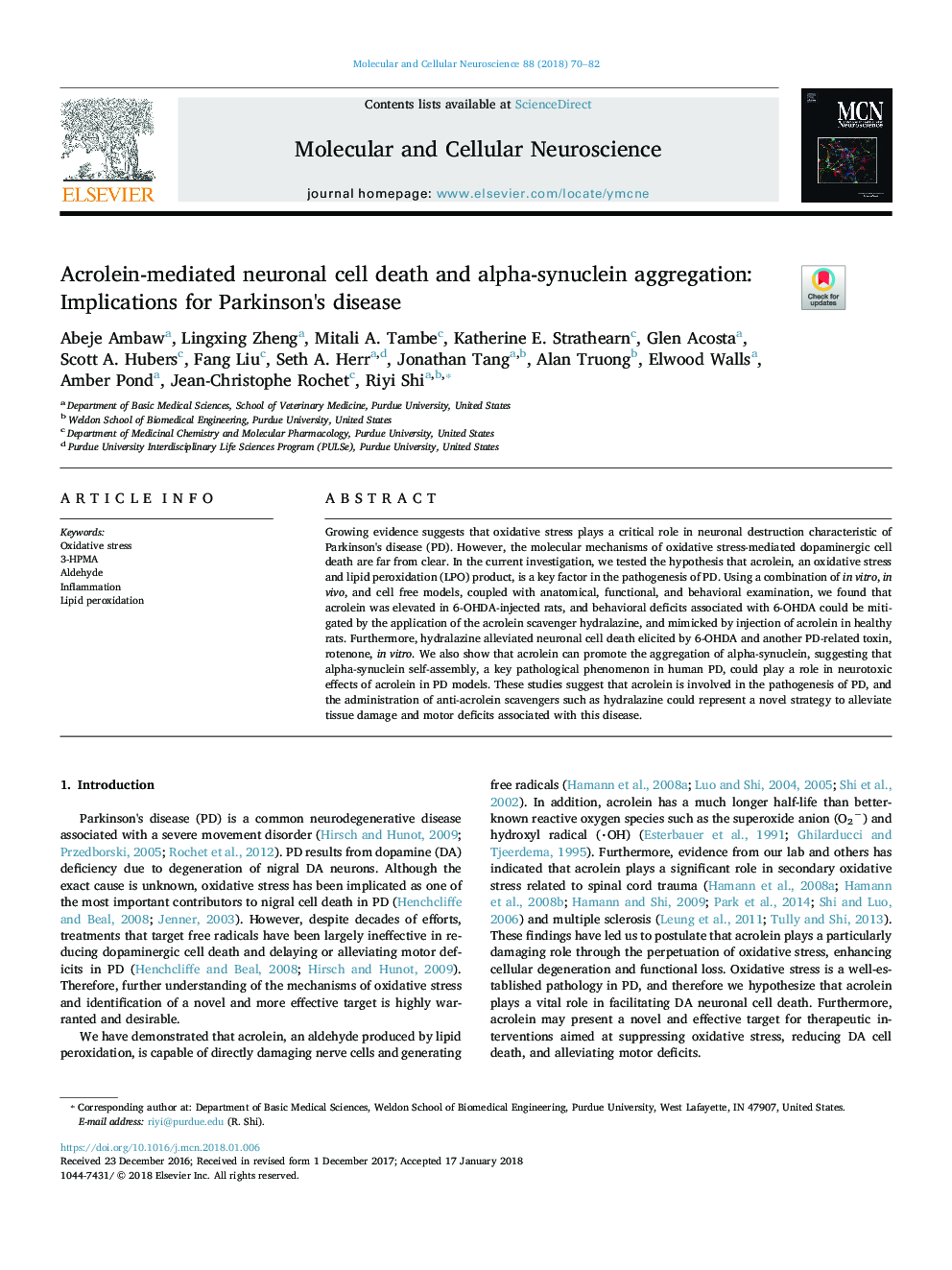| Article ID | Journal | Published Year | Pages | File Type |
|---|---|---|---|---|
| 8478370 | Molecular and Cellular Neuroscience | 2018 | 13 Pages |
Abstract
Growing evidence suggests that oxidative stress plays a critical role in neuronal destruction characteristic of Parkinson's disease (PD). However, the molecular mechanisms of oxidative stress-mediated dopaminergic cell death are far from clear. In the current investigation, we tested the hypothesis that acrolein, an oxidative stress and lipid peroxidation (LPO) product, is a key factor in the pathogenesis of PD. Using a combination of in vitro, in vivo, and cell free models, coupled with anatomical, functional, and behavioral examination, we found that acrolein was elevated in 6-OHDA-injected rats, and behavioral deficits associated with 6-OHDA could be mitigated by the application of the acrolein scavenger hydralazine, and mimicked by injection of acrolein in healthy rats. Furthermore, hydralazine alleviated neuronal cell death elicited by 6-OHDA and another PD-related toxin, rotenone, in vitro. We also show that acrolein can promote the aggregation of alpha-synuclein, suggesting that alpha-synuclein self-assembly, a key pathological phenomenon in human PD, could play a role in neurotoxic effects of acrolein in PD models. These studies suggest that acrolein is involved in the pathogenesis of PD, and the administration of anti-acrolein scavengers such as hydralazine could represent a novel strategy to alleviate tissue damage and motor deficits associated with this disease.
Related Topics
Life Sciences
Biochemistry, Genetics and Molecular Biology
Cell Biology
Authors
Abeje Ambaw, Lingxing Zheng, Mitali A. Tambe, Katherine E. Strathearn, Glen Acosta, Scott A. Hubers, Fang Liu, Seth A. Herr, Jonathan Tang, Alan Truong, Elwood Walls, Amber Pond, Jean-Christophe Rochet, Riyi Shi,
